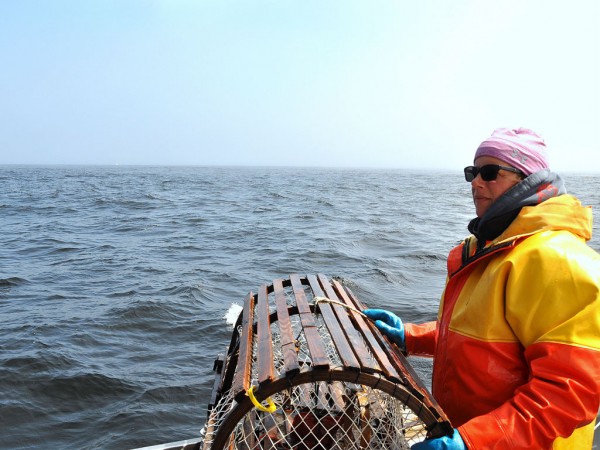While tariffs pinch US lobster exports, Canada corners China crustacean market.
Located on the Eastern Shore of Nova Scotia, Tangier Lobster Company has been a leading Canadian exporter of live lobster on the international marketplace for a number of years, with roots going back four family generations. Growth was humming along steadily until President Trump unleashed a tariff trade war earlier this year with China which responded in kind. In one fell swoop, Canadian lobster firms found themselves flooded with additional orders from China that have virtually dried up for New England seafood companies.
Commenting to AJOT on the significant shift in trade patterns, Stewart Lamont, managing director of Tangier Lobster, began by saying: “The Seafood World as we know it changed on July 6.”
That was the day China first imposed 25 percent extra tariffs on American seafood.
“It was actually a perfect storm for Canadian industry,” noted Christian Brown from the Halifax operations department of Flying Fresh Air Freight, a major perishables freight forwarding firm in Canada. Tariffs on Canadian lobster were, in fact, reduced by China at about the same time that the Trump measures came into effect, he indicated.

According to Canadian government statistics, lobster shipments to China soared to 1.25 million kilos in July 2018 from half that volume a year earlier. Most shipments are flown out of Halifax Stanfield International Airport on scheduled and more and more chartered jumbo freighters. In all of 2017, Canada sent China nearly US$160 million worth of lobster, representing a 393 percent spike in four years.
“Over the following 16 weeks from July until today, exports of live lobster from Canada to China gradually increased rather dramatically,” Lamont said. “Year over year I would estimate sales have doubled from Canada to China since July. It really is quite remarkable.
“Our sales at Tangier Lobster have increased by approximately 35 per cent. We export to 21 countries, so China is not for us the only fish in the sea.
“We have had 4-7 direct charters from Halifax and Moncton (New Brunswick) to Asia on a weekly basis over the past 4 months. They have temporarily stopped not because of high cost or lack of demand. Simply because hardshell Canadian lobster inventory finally ran out. Fortunately we began a new season in the Bay of Fundy on Monday October 15th. The charters promise to come back.”
Nurturing the New England Cconnection
Lamont also reflected on the importance of the close Canadian industry relationship with New England companies and expressed solidarity over their challenges under the current trade turbulence between the US and China.
“We in Canada work closely with seafood companies in New England. Anything that hurts them sooner or later hurts us. We need a strong relationship back and forth, and these China tariffs have been brutal for our American partners.”
China’s Special Market Conditions
Turning to market conditions with China, Lamont stated: “China likes high volume and low prices. That does not normally match well with the Canadian environment. We have premium quality hard shell high protein homarus americanus. The American lobster by comparison is a firm shell lobster at this time of year. Somewhat of a B grade compared to the best from Canada.
“But the China tariff has levelled the playing field. It has added $2-3.50/lb to American lobster depending upon the size and the quality. So Chinese importers and distributors have scrambled for Canadian supply.
“We were pleased to receive the short term extra demand from mainland China but we know we remain vulnerable. For China, unlike many other Asian markets, price trumps quality (no pun intended),” Lamont concluded.
Meanwhile, lobsters and other seafood have fuelled airfreight growth at the Halifax Stanfield International Airport. Thanks to the expanding Asian appetite for seafood, there are frequent visits from Korean Air freighters and charters from such carriers as Suparna, Qatar Airways and Atlas Air. To accommodate the widebody freighters, the airport opened a new runway in 2016, and is now looking to enlarge its warehouse capacity, especially the cool chain facilities.





